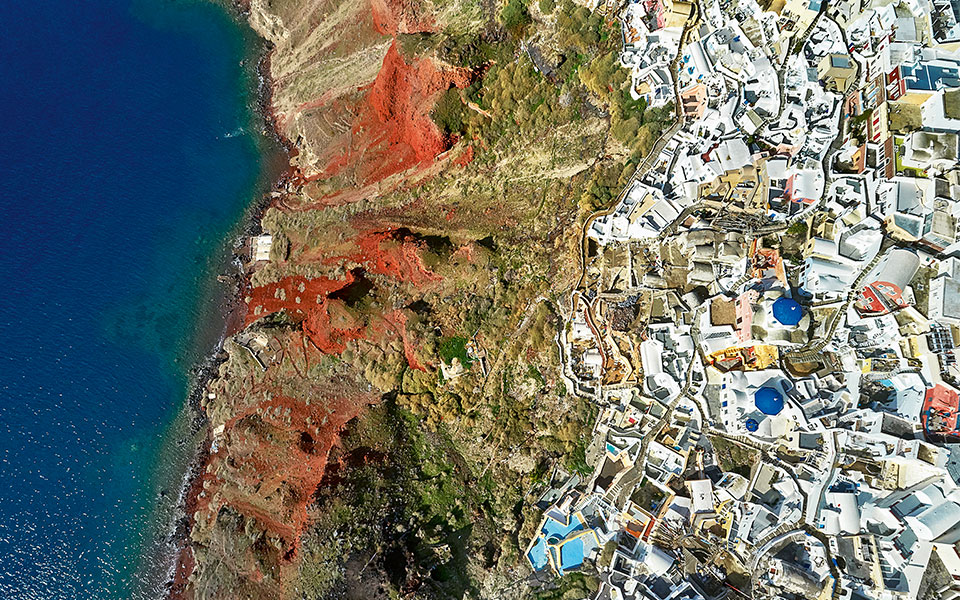
In perspective
You can wander through its stone-paved alleys, marveling at its whitewashed dwellings and enjoying its famous sunset, but a bird’s-eye view of Oia puts things in a different perspective. From this angle, it’s clear that the beauty you see around you is the result of what was an intensely violent volcanic eruption, and even though no repeat performance is expected any time soon, the island is sitting on top of a still-active volcano. Yes, humans have found a way to live on the edge of a caldera, but their coexistence with nature is possible only because nature allows it – and that’s exactly what makes this island irresistible.
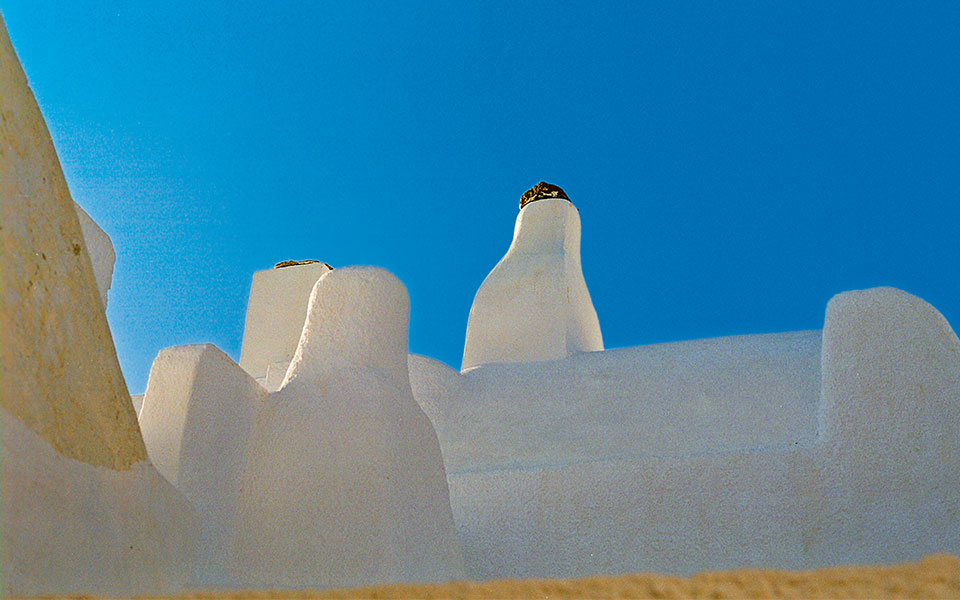
The art of simplicity
The settlements on Santorini probably wouldn’t be as charming if it weren’t for their architecturally unique yposkafa; these are structures, mostly private dwellings, that have been dug out of the volcanic rock, either partly or entirely. As a result, the villages are architecturally “tangled:” private and public spaces blend together and one home’s balcony forms the roof for another.
In the midst of this complexity, however, there is a simplicity as well. The soft clean lines and the absence of right angles lend to the structures an air of rudimentary sculpture, while the magical light of Santorini, which changes hourly, seems to bring them to life. Despite the fact that these buildings were originally created by poor, unskilled laborers as simple shelters against the elements, without much concern for architecture or style, they have become aesthetic paradigms.
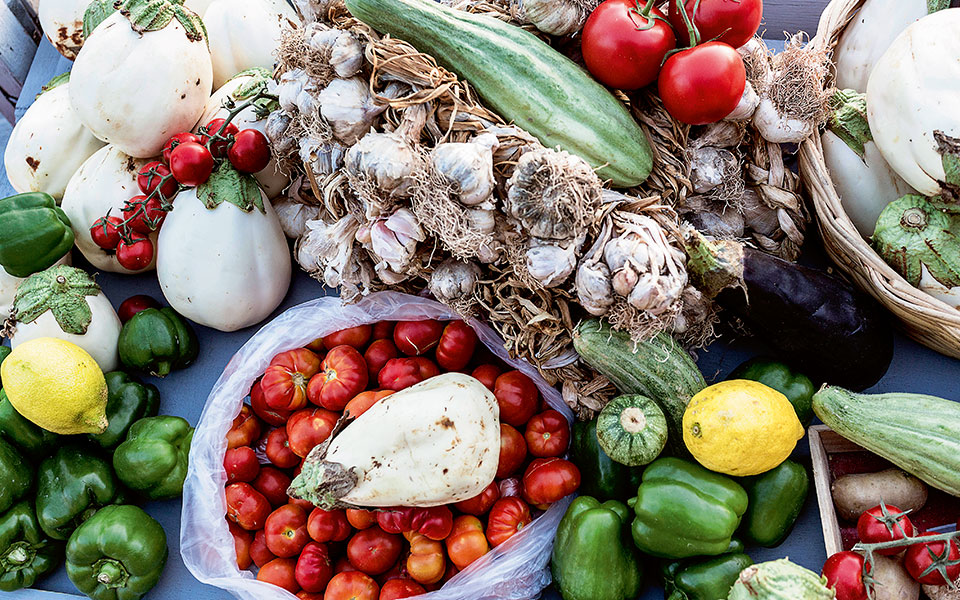
Tasty survivors
Buffeted by strong winds, seared by a hot sun and often grown without the aid of irrigation, the food crops of Santorini are hardy survivors packed with flavor, despite their difficult growing conditions – or perhaps because of them. The PDO cherry tomato, the yellow peas known locally as fava, the white eggplant and the other local produce, indigenous or not, are the stars of the much-admired local cuisine. But for how long will they be available? Ironically, these plants are facing another battle for survival, as Santorini’s farmland comes under pressure from construction and tourist activity. Thankfully, there are still farmers who are fighting against the odds to keep their land and to pass down age-old wisdom and skills to the next generation. But a farmer’s life is hard – even more so during periods of drought, such as this past winter – and not that many young people dream of working the land, either. So, next time you’re tucking into a delicious dish of fava purée with onions or a mouth-watering Greek salad with Santorini tomatoes and capers, remember that this isn’t just food; it’s a way of life and a philosophy for those who have committed themselves to toiling the soil here.
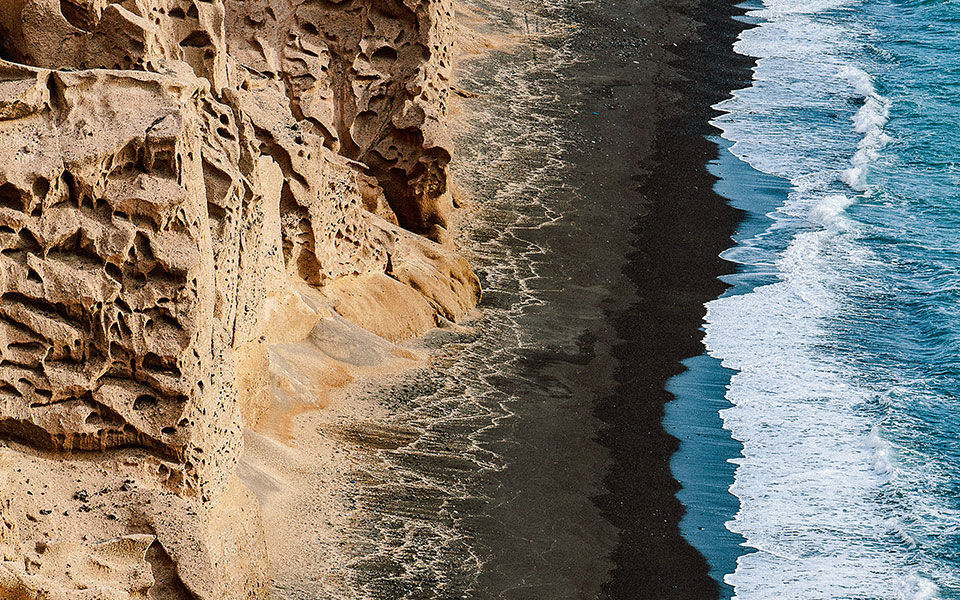
Beyond the infinity pools
Unlike other Cycladic islands, Santorini doesn’t boast many easy-to-reach beaches; the nature of its coastline makes most of them inaccessible by land. The few that do exist, however, are uniquely enjoyable. Perhaps the most dramatic of them is Vlychada, pictured here. Its black sands, which stretch along the shore for a considerable distance, affording spots with welcome isolation; its crystalline waters, which reach precipitous depths just a few feet from the shore; and its majestic volcanic stone cliffs, sculpted over time by wind and water, all combine to make this beach unforgettable. There’s also an excellent beach bar, Theros, on a section of the beach that has sun loungers.
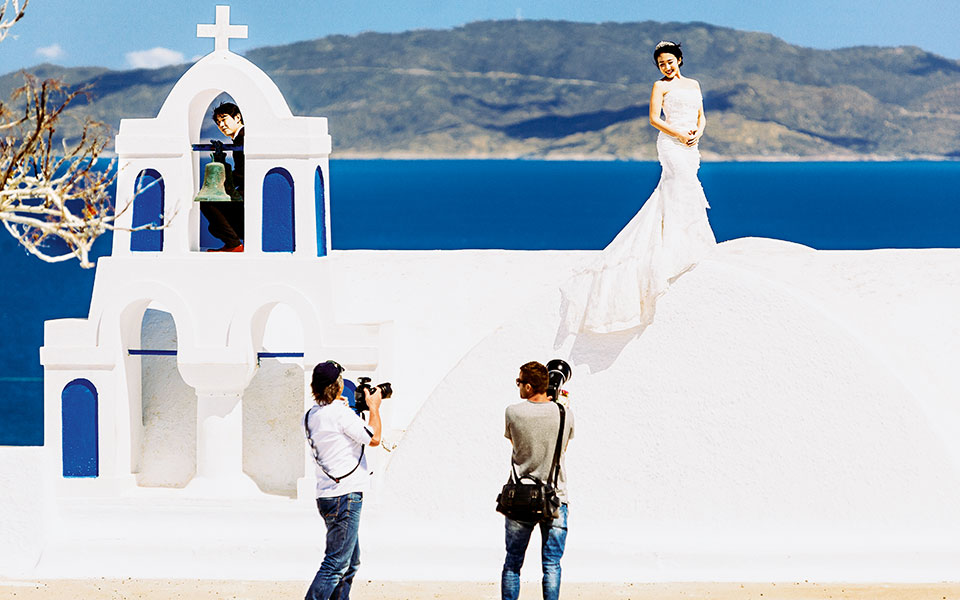
The island of “I do”
There’s a good reason why the phrase “destination wedding in Greece” conjures up images of couples tying the knot in Santorini – who wouldn’t want to have their wedding in such a romantic setting? That the couple we picture is usually Chinese is also understandable, since the island is a major destination for couples from China. The assumption that it’s a wedding destination for them, however, is the result of a cultural misunderstanding. Most Chinese couples do not travel halfway around the world to exchange vows. Instead, they come here to take photographs and shoot a video (which may involve as many as three cameramen and even drones, depending on the budget) that they can show to their guests at the actual wedding back home. Most of these events are arranged by Chinese agencies that offer – for a fee in the €1,000 range – a photographer and make-up artist, as well as a choice between four or five bridal gowns and wedding suits. The staging of the photographs, which seems to be getting more elaborate every year, is carefully planned, and the photo shoots invariably include a caldera view, but may also take place in spots where they really shouldn’t happen, such as on the top of a chapel (as shown here).










